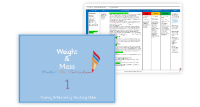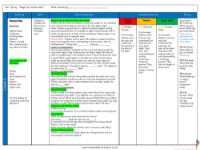Weight and volume - Measure mass - Worksheet

Maths Resource Description
In the third lesson of a series on measuring mass, Year 6 students are introduced to the concept of weight and mass through hands-on activities using balance scales and non-standard units such as cubes or bricks. The lesson aims to teach children how to measure and record the mass of objects, starting with the understanding that a balanced scale indicates equal mass on both sides. For instance, students might find that one apple has the same mass as a certain number of bricks. However, they also learn about the challenges of using non-standard units, such as when an object is not exactly the same mass as an integer number of these units. The lesson includes differentiated worksheets and teaching slides to support learning.
Key vocabulary for the lesson includes terms like weight, mass, non-standard units, cubes, bricks, scale, balance, heavier than, and lighter than. Students are encouraged to explore these concepts through a variety of activities that involve counting units to represent the mass of objects and reasoning questions to deepen their understanding. For example, they may be asked to complete sentences such as "The mass of the cake equals ____ cubes" or to predict what will happen to the balance scales if a marble is removed. The lesson also includes reasoning and problem-solving exercises where students must explain their thinking, such as determining if Rosie is correct in saying that a ball and a duck weigh the same when one big cube is equivalent to five small cubes. This approach helps students grasp the relationship between mass and the units used to measure it, fostering both fluency and precision in their measurements.



